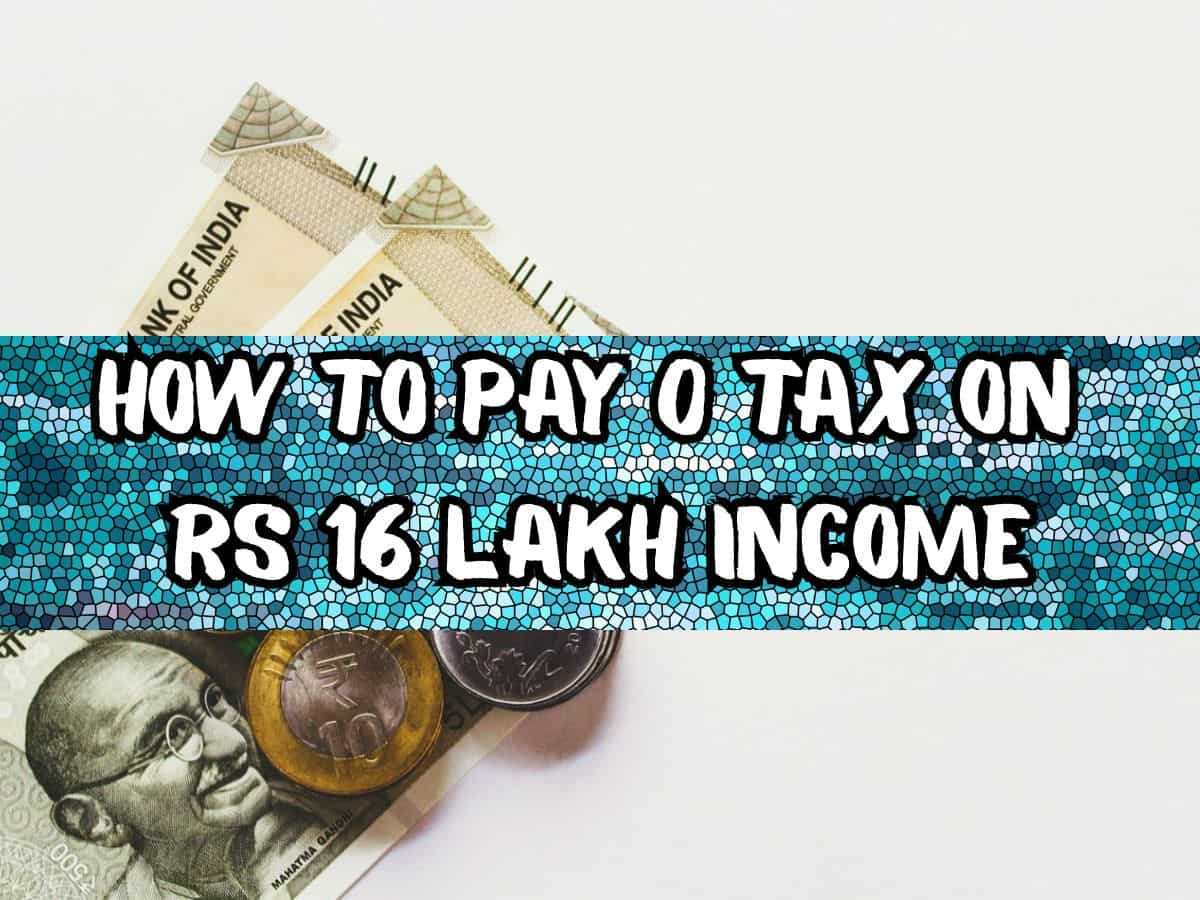How to pay 0 tax on Rs 16 lakh income: The revised new tax regime slab rates will be applicable for the income earned in the financial year 2025-26. Under the revised rates, individuals don’t need to pay any income tax on income up to Rs 12,00,000. For salaried-class individuals, this limit increases to Rs 12,75,000 as they also get a standard deduction of Rs 75,000.
If their income is slightly higher than that, they also get marginal tax relief?
But what if their income is much more than that?
What if they earn Rs 16,00,000 a year?
Can their liability be zero on such an income?
Know how it may be if they take the benefit of deductions available in the new tax regime.
First, have a look at how the income you earn in the financial year 2025-26 will be taxed as per the new tax regime.
| New Tax Regime Rates | |
| Income Tax Slabs | Tax Rate |
| Upto Rs. 4,00,000 | NIL |
| Rs. 4,00,001 – Rs. 8,00,000 | 5% |
| Rs. 8,00,001 – Rs. 12,00,000 | 10% |
| Rs. 12,00,001 – Rs. 16,00,000 | 15% |
| Rs. 16,00,001 – Rs. 20,00,000 | 20% |
| Rs. 20,00,001 – Rs. 24,00,000 | 25% |
| Above Rs. 24,00,000 | 30% |
Now see what the key benefits are that you can take in the new tax regime.
Standard deduction in new tax regime
A salaried-class individual can get a maximum standard deduction of Rs 75,000, which means they don’t need to pay any tax on Rs 12,75,000 income.
NPS tax benefit in new tax regime
In the new tax regime, a taxpayer can get tax benefits on the employer contribution to their NPS Tier I account.
The maximum tax benefit in such a case is up to a maximum of 14 per cent of the employee’s basic pay and dearness allowance (DA).
There is no tax benefit available on the employee contribution to their NPS account.
EPF tax benefit in new tax regime
A similar tax benefit is also available on the employer’s contribution to the employee’s EPF account. In this way, the maximum tax benefit for the employee is 12 per cent of their basic pay and DA.
Other key tax benefits for taxpayers in new tax regime
- New tax regime taxpayers can get a 100 per cent tax benefit on contributions to the central government’s Agnipath Scheme under Section 80CCH(2).
- On a daily allowance on an actual basis, but it will form part of CTC.
- On conveyance allowance on an actual basis, but it will form part of CTC.
- On travelling allowance on an actual basis, for travelling purposes, in case of transfer or office shifting.
- In case of family pension income, Rs 25,000 or 1/3rd, whichever is lower, is exempt.
- Rent income from let-out property will be exempt up to 30 per cent.
- Gratuity amount under Section 10 (10) up to Rs 25 lakhs is exempt.
- Income from life insurance policy Under Section 10 (10D) is exempt.
- Exemption for the second vacant house will be there, without considering deemed rent income.
- Leave encashment allowance Under Section 10(10AA), up to Rs 25 lakh is exempt.
- The voluntary retirement amount is exempt under Section 10 (10C) up to Rs 5 lakh.
- Transport allowance for special-abled persons will also be exempt.
- No taxable perquites received from the office, like an office laptop, medical policy and interest-free loan are exempt forming part of salary.
How to make Rs 16 lakh income tax-free in new tax regime
Gross income- Rs 16,00,000
Basic pay- Rs 8,00,000
Standard deduction- Rs 75,000
EPF tax benefit (12% of basic pay and DA)- Rs 96,000
EPF tax benefit (14% of basic pay and DA)- Rs 1,12,000
Tax benefit on PPF interest earned- Rs 20,000
Tax benefit on interest earned in post office scheme- Rs 3,500
Total tax benefits- Rs 3,06,500
Taxable income after taking these tax benefits- Rs 12,93,500
Income tax on this income- Rs 76,986 (including Rs 2,961 as education and health cess)
How to reduce Rs 76,986 tax to 0
You may request your company’s human resource officer to make transport allowance, entertainment allowance, book allowance, etc., part of your salary.
On a Rs 16 lakh income, you may easily get up to 76,986 as allowances in your salary.
If you claim these bills to your office, you will get tax benefits on the same amount, which will reduce your tax liability to 0.
Otherwise, you can take tax benefits of schemes such as Agniveer and others mentioned in the story to reduce tax liability to 0.
(Disclaimer: This is not financial advice. Do your own due diligence or consult an expert for financial planning.)
